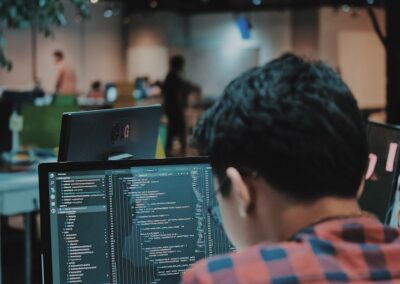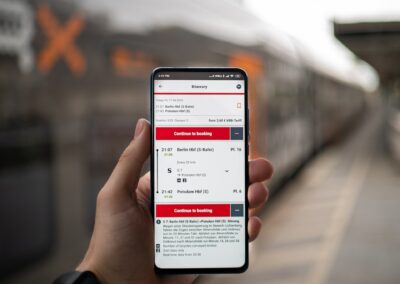Optimizing AI Models for Imbalanced Data: The Role of One-Class Classification Algorithms
Common Techniques for Implementing One-Class Classification Algorithms
To effectively implement one-class classification algorithms in AI models, businesses must understand the common techniques and methodologies that underpin this approach. One widely used technique is the One-Class Support Vector Machine (OC-SVM). OC-SVM works by learning the boundary that separates the majority class from the rest of the feature space, treating any data points outside this boundary as anomalies. This method is particularly effective for high-dimensional datasets where the minority class is sparsely represented. For businesses in Saudi Arabia and the UAE, where data complexity is often a challenge, OC-SVM offers a robust solution for detecting rare events while minimizing false positives.
Another popular technique is the Isolation Forest, which is specifically designed to identify anomalies by isolating observations in the dataset. The algorithm works by randomly partitioning the data into smaller subsets and then measuring how easily a particular observation can be isolated. The more isolated an observation is, the more likely it is to be an anomaly. Isolation Forest is particularly effective in scenarios where the anomalies are few and distinct from the majority class. In industries such as cybersecurity, where detecting outliers like potential security breaches is critical, businesses in Riyadh and Dubai can leverage Isolation Forest to build models that are highly sensitive to anomalies, thereby enhancing their ability to prevent and mitigate risks.
Autoencoders, a type of neural network, also play a significant role in one-class classification. These networks are trained to compress and then reconstruct the majority class data, learning the most important features in the process. During testing, if an input cannot be well-reconstructed by the autoencoder, it is classified as an anomaly. This method is particularly useful in detecting complex anomalies in data with intricate patterns, such as time-series data. For businesses in Saudi Arabia and the UAE that operate in environments where understanding subtle deviations in data is crucial, autoencoders offer a powerful tool for rare event detection.
Leveraging One-Class Classification Algorithms for Improved Rare Event Detection
One critical challenge faced by these organizations is the accurate detection of rare events in imbalanced datasets, where the occurrence of one class significantly outnumbers the other. This is where one-class classification algorithms come into play. These algorithms are specifically designed to identify and classify rare events by focusing on the majority class during the training phase and treating the minority class as an anomaly or outlier. By leveraging one-class classification, businesses can enhance the accuracy and reliability of their AI models, leading to better decision-making and improved outcomes.
One-class classification algorithms are particularly valuable in industries where rare event detection is crucial, such as finance, healthcare, and cybersecurity. For example, in finance, detecting fraudulent transactions—events that are rare but highly impactful—is essential for maintaining trust and security. By using one-class classification, financial institutions in Riyadh and Dubai can build models that are more sensitive to anomalies, allowing them to detect fraudulent activity more effectively. Similarly, in healthcare, early detection of rare diseases can significantly improve patient outcomes. One-class classification algorithms help healthcare providers identify these rare cases with greater accuracy, leading to timely interventions and better patient care.
Moreover, the benefits of one-class classification extend beyond specific industries. In change management and executive coaching services, for instance, identifying and addressing outlier behaviors within an organization can lead to more effective leadership and management strategies. In Saudi Arabia and the UAE, where business success often hinges on the ability to navigate complex and dynamic environments, the ability to detect rare events and anomalies is a critical component of strategic decision-making. By integrating one-class classification algorithms into their AI-driven strategies, businesses can gain deeper insights into their operations, identify potential risks, and capitalize on emerging opportunities.
In conclusion, one-class classification algorithms provide a powerful and effective approach for detecting rare events in imbalanced datasets. By focusing on the majority class and identifying anomalies, these algorithms enhance the accuracy and reliability of AI models, leading to better decision-making and improved business outcomes. For organizations in Saudi Arabia, the UAE, Riyadh, and Dubai, where data-driven strategies are key to success, leveraging one-class classification techniques such as OC-SVM, Isolation Forest, and autoencoders can lead to more effective business strategies, improved risk management, and sustained success in an increasingly competitive market.
#OneClassClassification, #RareEventDetection, #AIinBusiness, #MachineLearning, #DataImbalance, #BusinessIntelligence, #SaudiArabia, #UAE, #Riyadh, #Dubai, #ChangeManagement, #ExecutiveCoaching, #BusinessSuccess































